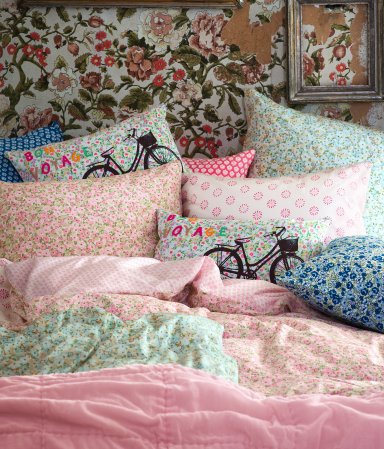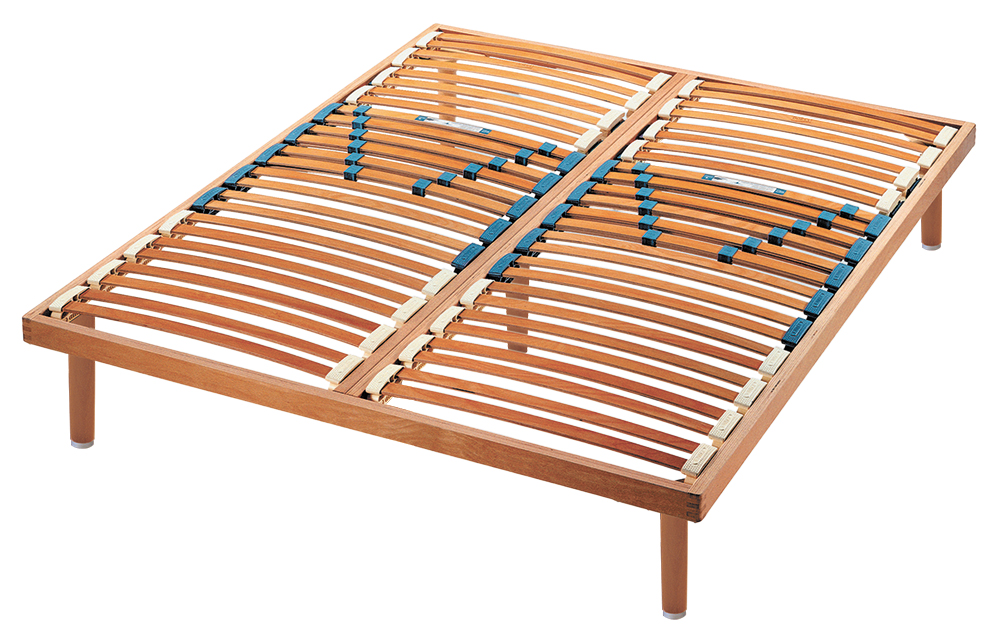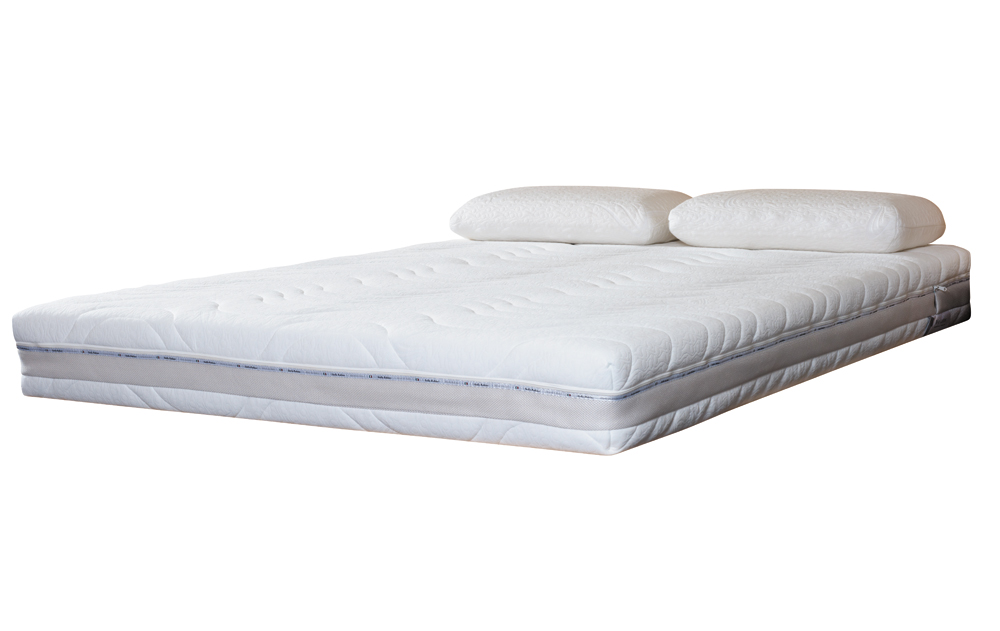I struggle with sleep. It’s elusive stuff. It’s largely related to my auto-immune disease (although sometimes I wonder what comes first…). I’ve written about my insomnia here, and I’ve shared a bunch of sleep solutions you all sent in here. But at some point I had to look at my bed.

I’ve been sleeping on a coil spring ensemble for 11 years. I’ve previously been told they ain’t great for you, especially for AI folk – they’re essentially EMF conductors. But I’m vocally and stridently against chucking stuff out just because a product no longer suits my principles or whatever. Thus, for many years it’s been a dilemma – replace or stay and burn?
But this is where I have arrived: my old bed is 11 years old and it’s generally advised you should replace a coil spring mattress after ten. Plus, I need a guest bed (my coil-y one will move into my spare room). All of which- now that I’ve weighed up the various factors – has given me a green light to get myself a new bed.
Please note: In this My Simple Home series I implore you to weigh up your own predicament at every turn as I have above. Please don’t chuck stuff out other than as a carefully considered last option.
I have researched my options for several months now and the Big Fat Conclusion I’ve arrived at is that…
a latex mattress with a wooden slatted base is best.
Me, personally, I’ve chosen the Bio Latex mattress from The Comfort Shop, and I’ll explain why.
And just so you know, this is a sponsored post, but opinions are all my own and I researched the topic and approached The Comfort Shop myself. You’ll find my position on sponsored posts and advertising here.
So why latex?
It’s 100% natural. Latex – despite the scientific-y name – comes from latex vessels under the bark of the rubber tree. Which means…
It’s best for your health. Latex is hypoallergenic so it’s great for allergy sufferers or for people who suffer from hay fever, asthma and respiratory problems.
Oh, and it’s also anti-microbial. Rubber trees have a protective anti-microbial “milk” to protect it from damage. The milk forms a protective layer to
prevent infection which means that fungus, bacteria and dust mites simply can’t survive inside a latex mattress.
It’s sustainable… In that it lasts longer than other mattresses – about 20-30 years. Latex is elastic, which helps to eliminate sagging and loss of firmness in the mattress. You sit on it and get up and it bounces right back to it’s original position as soon as the pressure is removed.
And why not talaley?
Talaley is not always 100% natural. Talaley is often a blend of natural latex (called Dunlop latex) and synthetic, petroleum-based latex, the latter being cheaper to produce. Talaley is gelled together with carbon dioxide gas to lock everything in place. And so it’s far from being a natural product. No carbon dioxide is used in the manufacturing process of the Dunlop latex mattresses.
And why The Comfort Shop?
It’s a small Australian company… And I like to support such things. Plus, their latex mattresses come from Italy, not through Asia. Why does this matter? Because mattresses passing through Asia get sprayed with a bunch of hazardous fumigants. Which kinda ruins the whole clean sleeping vibe.
Some extra bits…
Can I just use any old bed base?
You’ll need to use a slatted base, or at least a base with some holes in it to allow for air to flow naturally through the base and the mattress.
I went with the Ergo Bed Base from The Comfort Shop. It’s made from European Beech Timber (clean, sustainable) and ticks off a bunch of European standards and certifications for safety. The Euros are world leaders in all this toxin-free stuff. I sleep more soundly going with their stuff.
There are two sides to my base, so that each person (should I happen upon a bed mate!) can control their own bed. Plus partner disturbances are minimised. Two things: there’s a manual adjustable head and back rest, which moves to 6 different incline positions. And the rigidity adjusters – yes, that’s their name – vary the tension on the slats, so that each side can be made firmer or softer. The posture slats are designed to work with your mattress in absorbing your body weight and movement, which reduces pressure on your body.
And electric blankets?
Yes, if you really want to use one, electric blankets don’t harm latex mattresses. But it is best to choose an electric blanket with thin wires. I, however, have to add that I don’t advise using electric blankets in general – TERRIBLE EMF stuff going on, again, defeating the clean sleeping vibe. Just so you know.
And don’t they get hot?
Not so much. I looked into this, even though I tend to sleep cold. There are MANY forums devoted to people debating this topic. Check them out if you’re curious. The concern is that latex is a closed cell material, so it doesn’t allow the air to circulate as much. But good brands overcome this with carefully placed pin core holes studded throughout. The holes go all the way through, so that the mattress can breathe. My mattress also has a ventilation band, which allows for extra breathing, and keeping a neutral temperature. This was a big part of why I chose this mattress… trust me, I tested a few!
My verdict:
I’ve tested out my Bio Latex mattress for 6 weeks now. The experience is a unique one: while it’s a lovely firm feel, at the same time it has a “snuggliness” that makes you feel like the mattress is hugging you. There’s no other way to describe it. It’s complete support. I also invested in The Comfort Shops latex pillows – which are lovely and firm, too. I have neck issues…the combo – of the snuggly-but-firm mattress and the pillows – seems to be helping this. The bed certainly doesn’t get hot and, despite REALLY hot nights of late, I’ve been waking up with the general feel that the bed hasn’t got “sweaty”. Do you know what I mean? The whole experience feels clean and airy.
Am I sleeping better? I am. I’m actually sleeping all the way through the night (most nights). It only occurred to me the other day that this had been a consistent thing for a good few weeks now. There are a number of factors contributing to my insomnia, but having something snuggly-but-firm to collapse into each night is certainly making a difference.
PS: Don’t throw away your old mattress. Recycle it!
If you are in the market for a new mattress, consider what you do with the old one. There are a number of restrictions on getting rid of mattresses because most people don’t want to sleep on yours. Surprisingly! Waste centres won’t usually take them because of the bulk, or charge a higher fee. For a cost effective removal of your old mattresses and bases, check out Landsavers.
Feel free to post questions below…and please add your own Simple Home ideas and tips…I’ll be updating posts and creating new ones with the information I find (and will be sure to link back to you!)….
Posts on sarahwilson.com may contain links to sponsors and affiliates with the capacity to receive monetary compensation, which helps to support the growth and development of this site. Giveaways are sponsored promotions and will always be stated as such on the post. Books, eBooks and other products that align with my site and ethos may potentially be accepted for review, but please respect my desire not to clutter my life with “stuff” before you send your wonderful product or press release. I am not a medical professional; rather, a wellness advocate, therefore anything written by myself on this site is my own (researched) opinion and not advice from a trained doctor. Here is a full breakdown of my position on sponsored posts and advertising.



